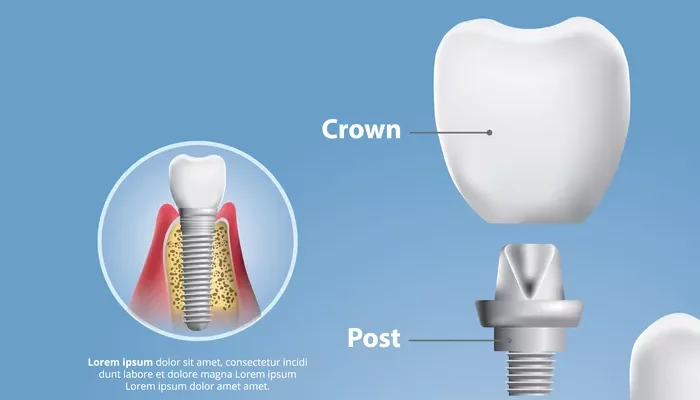Dental implants are a popular and effective solution for replacing missing teeth. They are designed to mimic the natural structure of a tooth, with a titanium post that is surgically placed into the jawbone and a crown that is attached to the post.
While dental implants are generally considered to be a long-lasting and durable solution, there are some cases where the implant may become loose or wiggly. In this article, we will explore the possible causes of a loose dental implant and what can be done to address the issue.
What Does It Mean When Dental Implant Wiggles
When a dental implant wiggles, it generally indicates that the implant has not fully integrated with the bone, a process known as osseointegration. Osseointegration is critical for the long-term stability of a dental implant, where the bone fuses securely around the implant. If the implant wiggles, there may be several underlying causes:
Insufficient Bone Density: If there isn’t enough healthy bone to support the implant, it might not integrate properly, leading to instability and movement.
Implant Failure: An implant might fail to bond with the bone, possibly due to infection, poor surgical placement, or too much stress placed on the implant during the healing period.
Infection: An infection around the implant (peri-implantitis) can cause the implant to loosen. Infection prevents proper healing and osseointegration.
Poor Implant Placement: If the implant was not placed correctly during surgery, it might be at an angle or location that makes it more prone to loosening.
Excessive Force: If the implant is subjected to excessive biting forces too soon, such as by chewing hard food, it can cause it to wiggle or fail to integrate properly.
Implant Material or Design Issues: In rare cases, a defect in the implant itself could lead to failure or loosening.
Treatment for a Loose Dental Implant
The treatment for a loose dental implant will depend on the underlying cause of the problem. In some cases, the implant may need to be removed and replaced with a new one. In other cases, the implant may be salvaged with additional treatment.
1. Failed Osseointegration: If the implant has not properly fused with the jawbone, it may need to be removed and replaced with a new one. In some cases, a bone graft may be needed to improve the chances of successful osseointegration.
2. Infection: If the implant is loose due to infection, the area may need to be cleaned and treated with antibiotics. In some cases, the implant may need to be removed and replaced after the infection has been cleared.
3. Trauma: If the implant has been damaged due to trauma, it may need to be removed and replaced with a new one.
4. Overloading: If the implant is loose due to overloading, the patient may need to make changes to their diet or lifestyle to reduce the amount of pressure placed on the implant. In some cases, a nightguard may be recommended to protect the implant from the effects of teeth grinding.
Preventing a Loose Dental Implant
While not all cases of a loose dental implant can be prevented, there are several steps that patients can take to reduce their risk of implant failure. These include:
1. Maintaining good oral hygiene: Regular brushing and flossing can help to prevent infection and inflammation around the implant.
2. Avoiding hard or sticky foods: Chewing on hard or sticky foods can place excessive pressure on the implant, which can cause it to become loose over time.
3. Wearing a mouthguard: If the patient grinds their teeth at night, wearing a mouthguard can help to protect the implant from damage.
4. Regular dental checkups: Regular dental checkups can help to identify potential problems with the implant before they become more serious.
Conclusion
In conclusion, a loose dental implant can be a serious problem that requires prompt attention. If you are experiencing a loose implant, it is important to see your dental professional right away to determine the underlying cause of the problem and develop an appropriate treatment plan. By taking steps to prevent implant failure and seeking prompt treatment when problems arise, patients can help to ensure the long-term success of their dental implants.
Related topics:

